-
EngineTurbo 1.0L I3
-
Power123 HP / 125 LB-FT
-
Transmission6-Speed Manual
-
0-60 Time11 Seconds (est.)
-
DrivetrainFront-Wheel Drive
-
Curb Weight2,800 LBS (est.)
-
Seating2+3
-
Cargo23.8 CU-FT
-
MPGNA
Remember the good old days, when compact cars were powered by six-cylinder engines? Yeah, neither do we.
It's been a long time since a mainstream brand offered anything other than a four-banger in its econoboxes, and for good reason. While a half-dozen cylinders might have been necessary to adequately motivate Ford Falcon, Dodge Dart and later Chevrolet Cavalier models, any carmaker will tell you that modern four cylinders make more than enough power to propel even today's jumbo-sized compacts.
But wait just a minute. What did we say? More than enough power. That sounds like an opportunity.
Indeed, Ford has announced it will soon be selling a three-cylinder engine, in a car, in the United States. But not just any triple – a turbocharged, direct-injected three-cylinder with independent variable cam timing wearing the EcoBoost moniker on its plastic engine cover. Making 123 horsepower and 125 lb-ft of torque, the 1.0-liter Ecoboost is already on sale in Europe, where it comes installed in mid-spec Focus models. By comparison, the direct-injected 2.0-liter naturally aspirated four in our domestic Focus makes 160 hp and 146 lb-ft of torque.
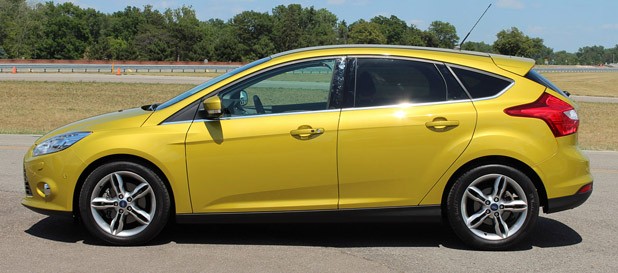
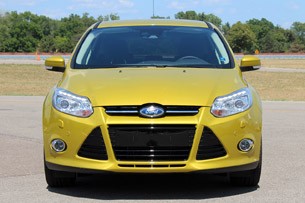
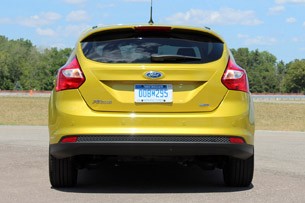
The three cylinder was designed by Ford's U.K. operation to be efficient, full stop. It's made of cast iron instead of aluminum to avoid using cylinder liners and allow for having Siamesed bores, which helped shrink the engine small enough that Ford says the block can fit on a sheet of A4 paper. (That's the European size that's just slightly larger than our standard, 8½- by 11-inch letter.) Fully dressed, the engine weighs just 214 pounds. Ford opted to avoid using balance shafts, instead relying on an unbalanced flywheel and crank pulley and tuned engine mounts to counteract the inherent vibrations of the design.Sometime next year this engine will appear in a vehicle sold here.
Now Ford hasn't said for certain it's going to be putting the three-cylinder under the hood of the Focus, merely that sometime next year the engine will appear in a vehicle sold here. It could well be the Fiesta – it probably should be the Fiesta. But Ford did let us sample a European Focus here in the States for a few days to get a taste of its smallest powerplant. While we'll get to the details of how it drives soon enough, note that we're now some 400 words in and we've yet to make a Geo Metro joke.
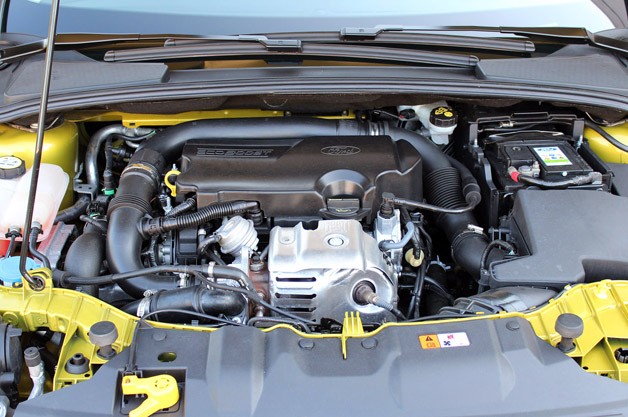
For starters, this Focus is a real car. Rather than some bargain-basement stripper model, it was well equipped, though differently than the Focus Titanium we drove for comparison. While Ford didn't provide a detailed spec sheet for the European car, it had a start-stop system, active park assist, a blind spot warning system and a lane-keeping system. Even better, the 1.0-liter Ecoboost engine was paired with a six-speed manual transmission rather than the U.S. model's five-speed.The 1.0-liter Ecoboost was paired with a six-speed manual transmission rather than the U.S. model's five-speed.
The six-speed wasn't quite everything we've wished for, but it was certainly preferable to our domestic tranny. Where the five-speed in the U.S. Focus feels like a transmission from a base model car, albeit a good one, the European six-speed has a better shift action, with a more precise feeling and engagement. But the throws are rather long, and this is far from a close-ratio box, having not one, but two overdrive gears.
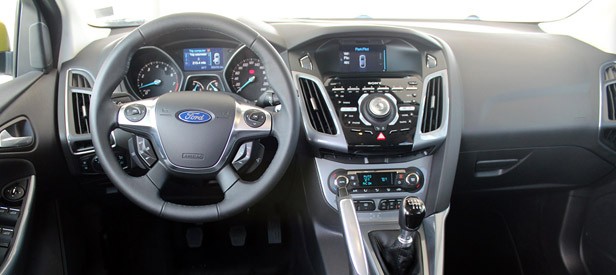
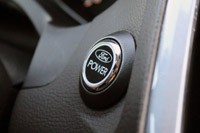
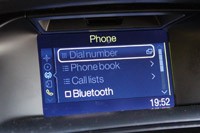
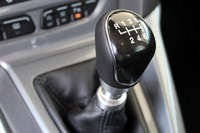
The clutch in the European car was nicely damped in both directions, but its friction point was occasionally hard to target, something that wasn't helped by the car's first gear ratio (3.73), which is numerically greater than the already steep U.S. car. But the deep first gear, the low 1,400-rpm torque peak of the turbo three and an overboost function that briefly allows the engine to make 148 lb-ft of torque helps the Euro Focus accelerate from a stop similarly to its larger-displacement sibling, at least initially.It's quiet and comfortable, entirely free of the noise and vibration you might expect from a three-cylinder.
After that, as long as you can keep the revs up, the 1.0-liter can hang with most traffic, though you will notice the 37-horsepower deficit compared to the 2.0-liter model. The three-cylinder forces you to be a better driver, and since you'll be constantly rowing through the gears, it's even quite a bit of fun. It's also quiet and comfortable, entirely free of the noise and vibration you might expect from a three-cylinder. Quick it is not, however, with Ford quoting an 11.3-second 0-62 mph time. But before you start to scoff, understand that even though that's slow, the car just doesn't feel that slow – at least not until you forget to downshift.
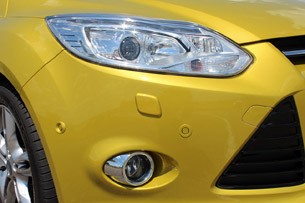
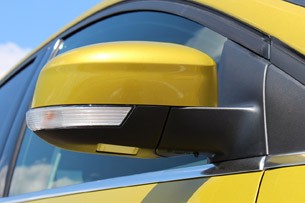
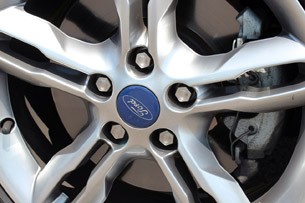
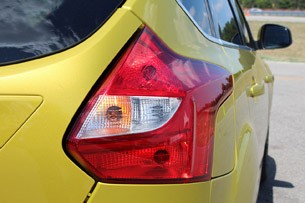
Most of the enjoyment, of course, comes from how well the Euro Focus handles, which we found even better than the domestic-spec Focus Titanium. Steering in the Focus is universally excellent, quick and well weighted, with the sort of good feedback that we'd like to see in all electric power steering systems. While both cars allow some body motion during cornering and lane-changing maneuvers, it's more of a gentle reminder to keep you from doing something stupid than the wallowing you get in many compact cars. Where the European Focus really shows its mettle, however, is in effecting a quicker turn-in and being more resistant to understeer. While we're unsure of the comparative curb weights of the Euro Focus and the Platinum, we'd guess that the former was lighter by a passenger's worth.Where the European Focus really shows its mettle is its quicker turn-in and being more resistant to understeer.
For all the fun we had driving the three-cylinder Focus, however, our trips to the gas station were notable for their lack of post-fill-up excitement. The 1.0-liter EcoBoost Focus is good for 56.5 miles per Imperial gallon in European fuel economy testing, a number that means just as little as its £17,945 starting price. Just as you can't effectively plug the MSRP in British Pounds Sterling into a currency converter because U.K. car prices include various taxes and duties, the European fuel economy cycle cannot be cleanly converted to that of the U.S. EPA cycle.
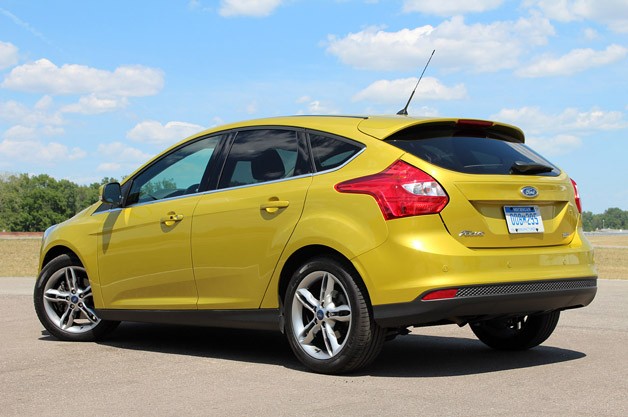
Ford wouldn't speculate on potential fuel economy numbers were it to subject the 1.0-liter Focus to EPA scrutiny, and even as we hoped to calculate hybrid-like fuel economy in our own testing, we instead found the Focus rather, well, Focus-like. In around-town driving we saw between 25-32 miles per gallon, while we managed only 35 mpg from the 1.0-liter Ecoboost cruising between 70-75 mph on the freeway. While the city numbers were better than we'd experienced in the Focus Titanium, we wish we knew how much of that we could credit to the engine and how much came as a result of the start-stop system. On the highway, we just wish we had seen better fuel economy, period.In around-town driving we saw between 25-32 miles per gallon, while we managed only 35 mpg on the freeway.
With an EPA rating of 30 mpg combined, a number that has proven fairly realistic, the five-speed Titanium's mileage isn't that different than what we saw from this European car. But the European Focus requires premium gasoline, leaving us unconvinced that its math could work well here in the U.S. We're similarly unsure how well the three-banger would fare when mated to Ford's notorious Powershift dual-clutch automatic, which we imagine would have to be offered to an American public that doesn't like shifting for themselves, certainly not in the volume required by the three-cylinder. All of which leaves us thinking that when we next see Ford's three-cylinder on American soil, it will be residing under the hood of the Fiesta.
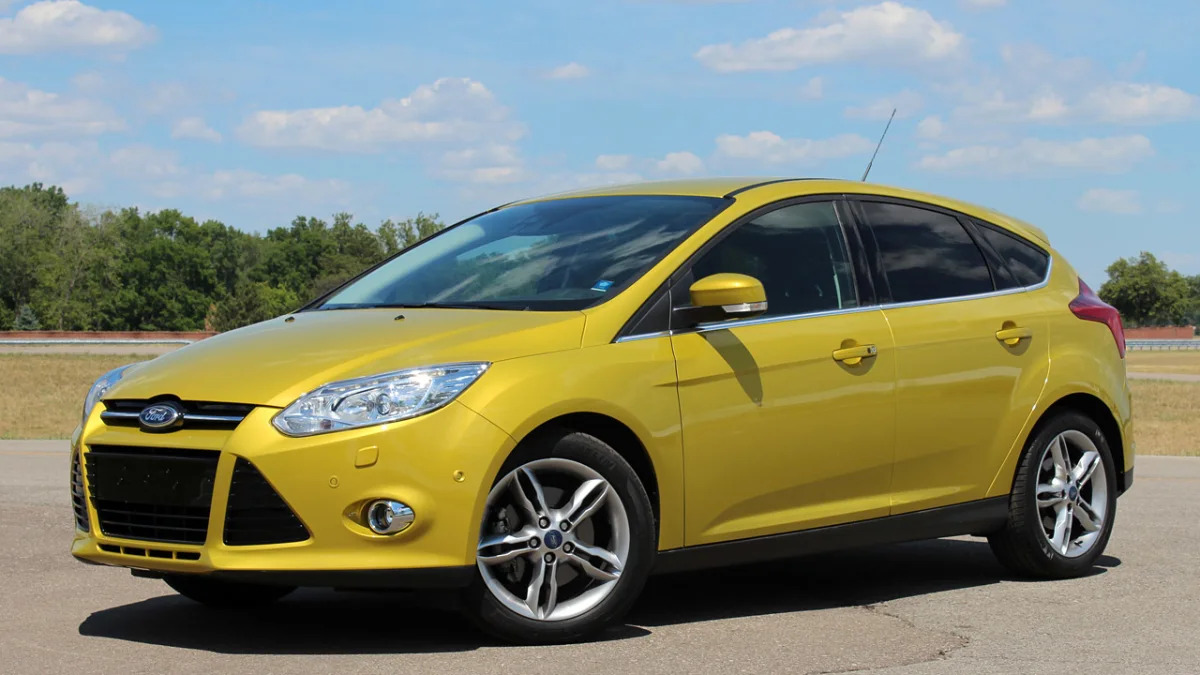









Sign in to post
Please sign in to leave a comment.
Continue